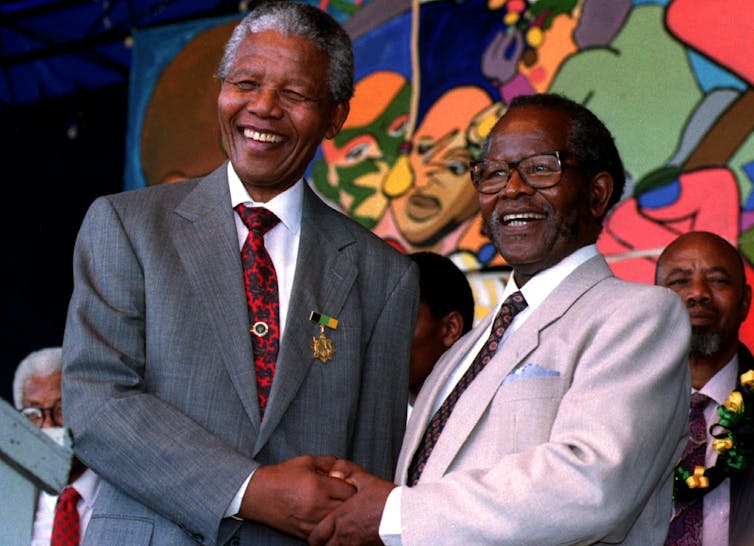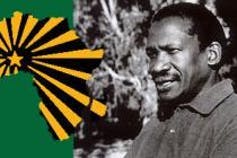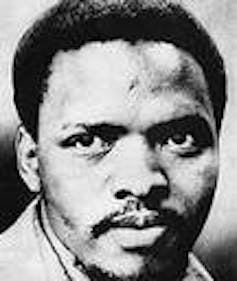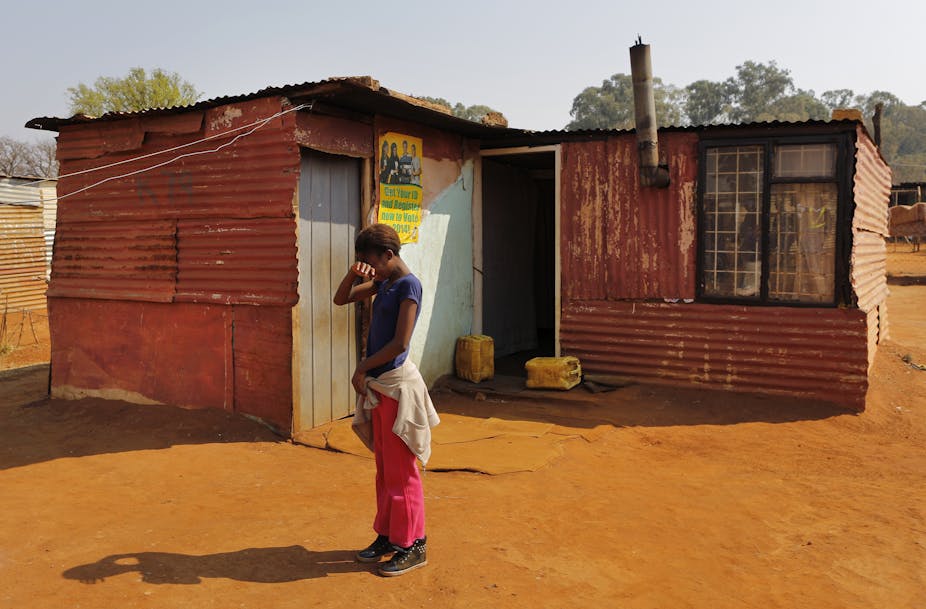The goal of one united South African nation living prosperously under a constitutional democracy remains elusive. This is in spite of the constitution boldly declaring that
South Africa belongs to all who live in it, both black and white, united in our diversity.
The central issue raised by the struggle against racial injustice, colonialism and imperialism – what is referred to in South Africa as the National Question - reemerged dramatically three years ago. It started as a demand for the removal of the statue of arch imperialist and colonialist, Cecil John Rhodes, from a prominent position at the University of Cape Town. It rapidly grew into a powerful movement in support of decolonisation. The National Question, it appears, remains highly relevant and unresolved.
In a new book, The Unresolved National Question: left thought under apartheid a number of authors set out the multifaceted origins of the idea.
Political traditions
Four main contested political traditions have shaped this debate.
The first is the Marxist-Leninist tradition, which goes back to the Soviet Union in the 1920s and the debates between Lenin, Stalin and Manabendra Nath Roy of India.
At the centre of these debates was the idea of two distinct stages in the struggle for national liberation, a national democratic stage and then a socialist stage. This strategic approach was adopted by the Communist Party of South Africa - now the South African Communist Party (SACP), in 1928/1929. It later developed into the idea of South Africa as a colonialism of a special type.
The second is the Congress tradition, associated with the African National Congress (ANC) and its iconic leaders, Albert Luthuli, Oliver Tambo and Nelson Mandela. At the heart of this tradition is the idea of one non-racial nation. Historian Luli Callinicos shows how Mandela and Tambo steadily widened their concept of the nation to include all races.

Professor Robbie van Niekerk, a South African expert on social policy, traces the roots of the ANC’s economic and social thought to the 1943 Bill of Rights of African Claims and the 1955 Freedom Charter. In these documents “the nation” can only be fully realised through the universal extension and provision of public goods by a democratic state. Or, as Luthuli put it, the new government should have as its objective the creation of a democratic welfare state with redistributive social policies in health, education and welfare.
The third is the Trotskyite tradition. This goes back to the thirties in the Western and Eastern Cape and is associated with the Unity Movement. This approach is developed in the book by the late Marxist historian and then activist Martin Leggasick. Leggasick and his colleagues were to form the Marxist Worker Tendency of the ANC developing Trotsky’s notion of the “permanent revolution”. Revolution, they argued, developed continuously and unevenly on a world scale, rather than proceeding through discrete chronological stages. Legassick was eventually expelled from the ANC.
Finally, there is the Africanist tradition identified with Robert Sobukwe and the Pan Africanist Congress of Azania (PAC).

As political scientist Siphamandla Zondi makes clear, Africanism is a much broader tradition than the PAC. For the Africanists, the nation state is a product of Western modernity and colonialism. At the centre of the tradition is the notion of “epistemic disobedience”. The decolonisation of knowledge and its production are seen as a “rebellion against the neocolonised order of things”
Continuity and rupture
In the book, we discuss the debates that emerged after the banning of South Africa’s national liberation movements in 1960. We suggest that a process of continuity and rupture takes place. On the one hand, movements emerge that attempt to break with the past. These include:
the ethnic nationalism promoted by the apartheid government through its Bantustan policy,
the black consciousness movement associated with Steve Biko,
the emergence of a strong feminist movement,
the creation of a powerful workers’ movement with an emphasis on the primacy of the working class, and
a surprising outcome of the national democratic struggle - a “liberal” constitution.
But in spite of these new ideologies and movements, there is a great deal of continuity with past political traditions. Two examples illustrate this process of continuity and rupture.

The first one is the championing of ethnic nationalism and the endorsement of traditional Bantustan leaders after 1994.
We introduce the idea of the ethnic nation in the book through a chapter by Dunbar Moodie. He examines the debates that took place in the Afrikaner Broederbond. These show how liberal Afrikaner nationalist intellectuals, such as NP Van Wyk Louw, argued that Afrikaners cannot deny Africans what they claim for themselves, namely the right to self determination. Hence apartheid architect Hendrik Verwoerd envisioned the idea of the Bantustans culminating in a federation of “independent ethnic nations” in southern Africa.
The chiefs and tribal authorities that were created by apartheid were authoritarian, deeply undemocratic, and often corrupt. Yet they survived into the post-apartheid era.
The second example is the constitution and its Bill of Rights. There are those who believe that these rights, especially the socio-economic rights, such as the right to education and housing, provide the key to resolving the National Question.
Indeed, Jeremy Cronin and Alex Mashile, from the SACP, argue that under Thabo Mbeki the National Question was reduced to the deracialisation of monopoly capitalism. The goal of the national democratic revolution became the consolidation of a capitalist democracy by opening up South Africa to global markets and promoting a black capitalist class.
Resolving the National Question
What became clear in our conversations about the book that the National Question cannot be resolved solely through the country’s constitution. Much as it contains the potential for a far more radical transformative project than traditional liberalism, it cannot resolve the National Question.
The resolution of the National Question will require the resolution of what has been called the “social question”. This is a historic demand for the redistribution of wealth and the right of all citizens to education, health and welfare. Without addressing the legacy of land dispossession, economic exclusion, long term unemployment and racialised inequality, the National Question will remain unresolved.
The article is drawn from a recently published volume of research based essays titled The Unresolved National Question: left thought under apartheid. It was edited by Edward Webster and Karin Pampallis and published by Wits University Press.

